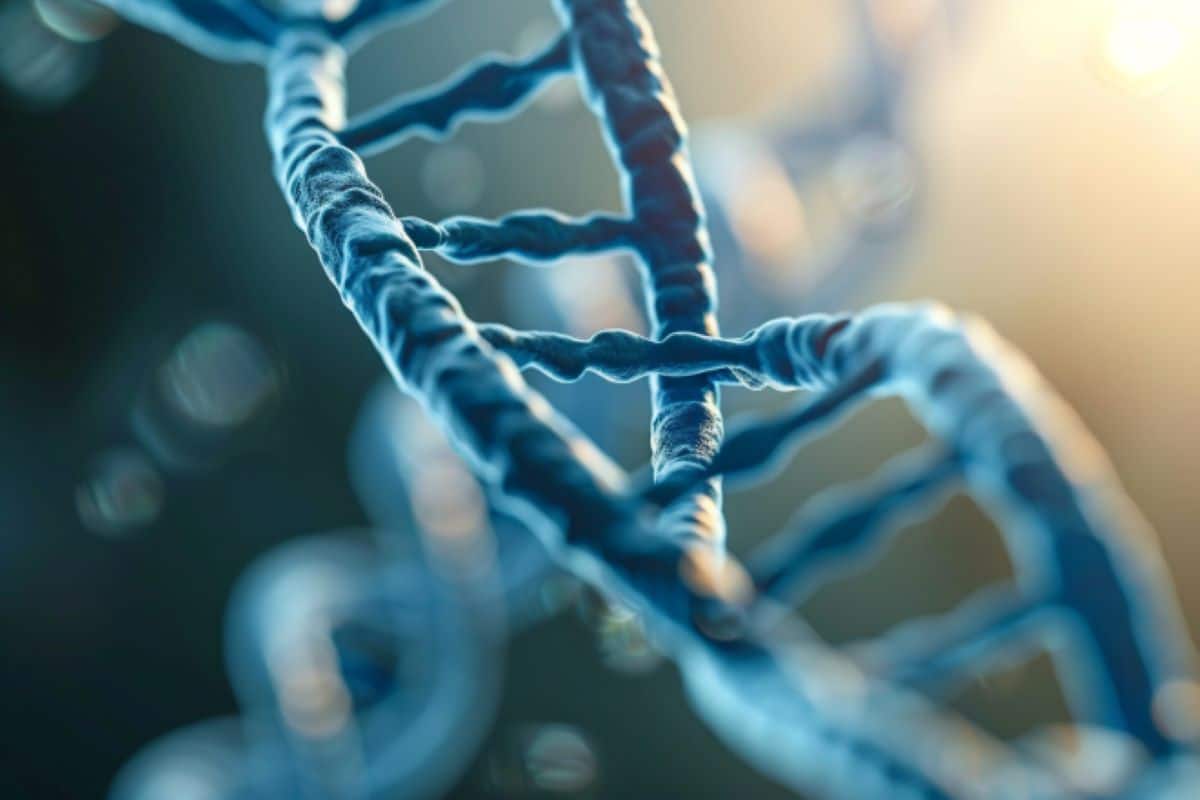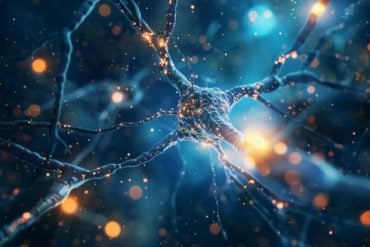Summary: revealed the most detailed view yet of the biological mechanisms underlying autism, linking genetic risk to cellular and genetic activity in the brain. Researchers used single-cell assays to analyze over 800,000 nuclei from post-mortem brain tissue of individuals with autism and neurotypical controls.
The study identified major cortical cell types affected by autism and specific transcription factor networks driving these changes. These findings provide a framework for understanding the molecular changes in autism and could lead to new therapeutic approaches.
Key Facts:
- Single-Cell Analysis: The study used single-cell assays to analyze genetic information from over 800,000 individual brain cell nuclei.
- Cell Types Affected: Profound changes were found in neurons connecting brain hemispheres and somatostatin interneurons.
- Transcription Factor Networks: Identified networks driving changes were enriched in known autism risk genes, linking genetic causes to observed brain changes.
Source: UCLA
A groundbreaking study led by UCLA Health has unveiled the most detailed view of the complex biological mechanisms underlying autism, showing the first link between genetic risk of the disorder to observed cellular and genetic activity across different layers of the brain.
The study is part of the second package of studies from the National Institutes of Health consortium, PsychENCODE. Launched in 2015, the initiative, chaired by UCLA neurogeneticist Dr. Daniel Geschwind, is working to create maps of gene regulation across different regions of the brain and different stages of brain development.

The consortium aims to bridge the gap between studies on the genetic risk for various psychiatric disorders and the potential causal mechanisms at the molecular level.
“This collection of manuscripts from PsychENCODE, both individually and as a package, provides an unprecedented resource for understanding the relationship of disease risk to genetic mechanisms in the brain,” Geschwind said.
Geschwind’s study on autism, one of nine published in the May 24 issue of Science, builds on decades of his group’s research profiling the genes that increase the susceptibility to autism spectrum disorder and defining the convergent molecular changes observed in the brains of individuals with autism.
However, what drives these molecular changes and how they relate to genetic susceptibility in this complex condition at the cellular and circuit level are not well understood.
Gene profiling for autism spectrum disorder, with a few exceptions in smaller studies, has long been limited to using bulk tissue from brains from autistic individuals after death. These tissue studies are unable to provide detailed information such as the differences in brain layer, circuit level and cell type-specific pathways associated with autism as well as mechanisms for gene regulation.
To address this, Geschwind used advances in single-cell assays, a technique that makes it possible to extract and identify the genetic information in the nuclei of individual cells. This technique provides researchers the ability to navigate the brain’s complex network of different cell types.
More than 800,000 nuclei were isolated from post-mortem brain tissue of 66 individuals from ages 2 to 60, including 33 individuals with autism spectrum disorder and 30 neurotypical individuals who acted as controls.
The individuals with autism included five with a defined genetic form called 15q duplication syndrome. Each sample was matched by age, sex, and cause of death balanced across cases and controls.
Through this, Geschwind and his team were able to identify the major cortical cell types affected in autism spectrum disorder, which included both neurons and their support cells, known as glial cells.
In particular, the study found the most profound changes in the neurons that connect the two hemispheres and provide long range connectivity between different brain regions and a group of interneurons, called somatostatin interneurons that are important for maturation and refinement of brain circuits.
A critical aspect of this study was the identification of specific transcription factor networks – the web of interactions whereby proteins control when a gene is expressed or inhibited – that drive these changes that were observed.
Remarkably, these drivers were enriched in known high-confidence autism spectrum disorder risk genes and influenced large changes in differential expression across specific cell subtypes. This is the first time that a potential mechanism connects changes occurring in brain in ASD directly to the underlying genetic causes.
Identifying these complex molecular mechanisms underlying autism and other psychiatric disorders studied could work to develop new therapeutics to treat these disorders.
“These findings provide a robust and refined framework for understanding the molecular changes that occur in brains in people with ASD — which cell types they occur in and how they relate to brain circuits,” Geschwind said.
“They suggest that the changes observed are downstream of known genetic causes of autism, providing insight into potential causal mechanisms of the disease.”
About this genetics and ASD research news
Author: Will Houston
Source: UCLA
Contact: Will Houston – UCLA
Image: The image is credited to Neuroscience News
Original Research: Closed access.
“Molecular cascades and cell type – specific signatures in ASD revealed by single-cell genomics” by Daniel Geschwind et al. Science
Abstract
Molecular cascades and cell type – specific signatures in ASD revealed by single-cell genomics
INTRODUCTION
Historically, psychiatric disorders have been distinguished from neurological disorders by the absence of the associated histological pathology observed in neurological conditions. But, over the past 15 years, epigenetic and transcriptional profiling of postmortem brain samples from multiple psychiatric conditions, including autism spectrum disorder (ASD), have revealed robust underlying molecular differences.
In ASD, this reflects up-regulation of immune signaling genes, down-regulation of neuronal markers and synaptic genes, and a blunting of gene expression signatures of cortical regional identity.
How a genetically complex condition such as ASD converges on shared transcriptional alterations remains a mystery. This gap is further amplified by the lack of biological insights into the differences in laminar and cell type–specific pathways affected in ASD and the underlying gene regulatory mechanisms.
RATIONALE
We reasoned that deep molecular profiling at the single-cell level would inform our understanding of changes in cortical cell types and circuits and, when integrated with genetic risk factors, enable identification of candidate drivers of pathways altered in ASD. Further, knowledge of these pathways at a cellular level would inform mechanistically driven therapeutic development.
RESULTS
We conducted single-nucleus RNA sequencing (snRNA-seq) and single-nucleus assay for transposase-accessible chromatin with sequencing (snATAC-seq) in a large ASD and control (CTL) cohort, as a core component of the PsychENCODE Consortium (https://www.psychencode.org/), to identify cell type–specific changes and the cellular regulatory networks perturbed by genetic risk factors.
Our approach (on average >10,000 cells per individual and >1860 genes per cell) enabled identification of all 26 major cortical cell types, validated with published cortical cell atlases.
We also identified cell states, primarily activated forms of microglia (MG), oligodendrocytes (ODCs), astrocytes (ASTROs), and blood-brain barrier cells, observed predominantly in ASD. Changes in cell composition in ASD were subtle, involving increases in activated microglia and astrocyte states, which are very rarely observed in controls.
In contrast to the minor changes in cell composition, the changes observed in gene expression in ASD were substantial: 2166 down-regulated and 1319 up-regulated genes across 35 cell types, most of which were cell type specific.
Through integration of snRNA-seq, snATAC-seq, and spatial transcriptomics, we identified regulatory networks driving cell type–specific transcriptional changes and their location within cortical laminae.
These analyses demonstrate concentration of activated microglia, astrocytes, and somatostatin (SST) interneurons in superficial cortical laminae, in conjunction with profound down-regulation of synaptic gene expression and up-regulation of stress-response and proinflammatory pathways in inter- and intrahemispheric projection neurons.
A large proportion of these changes could be ascribed to specific transcriptional drivers, and both the drivers and their targets were enriched in genes harboring common and rare genetic risk for ASD.
CONCLUSION
These analyses refine our knowledge of cellular and circuit alterations in the brain in ASD. By identifying and validating transcriptional drivers enriched in rare and common genetic risk variants, we have discovered a link between autism genetic susceptibility and molecular and cellular circuits and pathways, providing a roadmap for understanding cellular interactions and therapeutic development in ASD.






